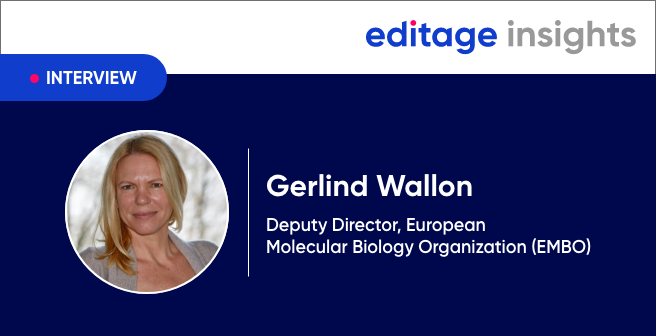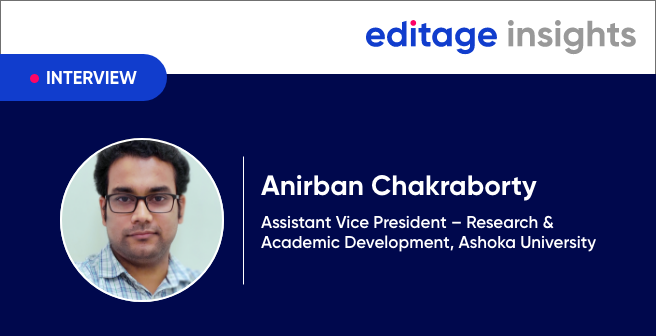How the IET inspires, informs, and influences the global engineering community

Ian Stoneham is Publisher at The Institution of Engineering and Technology (IET), a leading international professional and learned society serving the needs of the engineering and technology community. Ian handles the IET’s portfolio of research and rapid communication journals and academic books, which includes 27 hybrid research journals, one wholly Open Access journal, a programme of professional reference titles and monographs, and conference proceedings. He also manages the content acquisition strategy for Inspec, an engineering abstract and indexing database. Over the years, Ian has built a strong understanding of business operations and management in academic publishing. He has worked in various publishing roles for over 20 years – most recently as publisher for Faculty of 1000 and for CMG/Springer Healthcare. He has also held roles in sales for Martin Dunitz and Taylor & Francis.
In this first segment of a two-part interview series, Ian tells us more about the IET, its vision, mission, and service offerings to various stakeholders in academic publishing. The IET’s aim is to help the modern-day engineering researcher and practitioner with a range of services and products in the form of content and digital platform functions and tools and Ian tells us exactly how the IET achieves this primary goal.
Could you please give our readers an overview of IET publishing? If you were asked to point out three salient features of IET publishing, what would they be?
IET Publishing provides academics and practicing engineers with a wealth of high-quality resources in engineering, science, and technology for their research and information. The portfolio of IET resources covers every medium from print and digital to video, with IET.tv, the Inspec database, electrical standards and technical regulations publishing, E&T magazine, research journals, conference proceedings, and professional and academic reference books. The IET’s 29 letters, research, and open access journals comprehensively cover the disciplines of electrical engineering, and electronics, computing, control, healthcare technology, healthcare, and communications technologies. Our aim is to provide a range of services and products in the form of content and digital platform functions and tools that meet the requirements of the modern-day engineering researcher. All publishing activities are aligned to deliver on the IET mission which is to “inspire, inform and influence the global engineering community and to support technology innovation to meet the needs of society.” We commission intelligent engineering content for our journals, books, reference works, and magazines with a view to achieving the IET’s mission to inspire, inform, and influence.
How do authors benefit from publishing with the IET journals?
Our authors benefit from publishing with us by being exposed to a wide international audience that can discover and cite their work via the IET Digital Library. Our digital library also provides a number of user benefits to researchers, and all published authors now receive a link that can be used to provide free access to their article for 6 months after publication. Moreover, our “e-first” publishing ensures that authors’ work is visible and citable at the earliest opportunity, without having to wait for the next full issue. So publishing with the IET helps authors make their work more visible and accessible globally.
Could you tell us more about the IET Digital Library?
Sure! The IET Digital Library functions as our online platform and hosts the majority of our published content – primarily journals, eBooks, and conference proceedings – which we update and expand on a frequent basis. The topics available are typical of what the IET offers, and the archive dates back to 1872 with over 150,000 articles available. Access to content can be via subscription, free to view, open access, and pay per view. A user-friendly library interface ensures that users always find exactly what they need without having to comb through a maze of resources. The idea is to improve the discoverability of and access to published research.
What is IET Inspec and how does it work?
IET Inspec is an abstract and indexing research database offering over 110 years of coverage in physics, electrical and electronic engineering, computing and control, information technology, production, manufacturing and mechanical engineering, and many more interdisciplinary subjects, as well as from a range of publication types including journals, conferences, books, video, and most recently, dissertations. IET Inspec is the most trusted source that enhances research discoverability in these fields. As a key global resource to the engineering community, it boasts specialization within its field, quality and reputation, strong content coverage, intellectual selection, and classification and indexing by a range of subject specialists that ensure a consistent and evolving service. With over 16 million records available, it’s not only the scale of content available in IET Inspec, it’s the ability to drill down quickly and easily to exactly the key piece of information required, and then easily locate and potentially use it. According to the Times ranking, 76 of the top 100 engineering universities in the world use Inspec and the database is held in high regard by many corporate and government users.
As a professional society, the IET’s mission is “to inspire, inform and influence the global engineering community, supporting technology innovation to meet the needs of society.” How has the IET evolved in line with this mission?
The IET grew out of a merger between the Institute of Electrical Engineers and the Institute of Incorporated Engineers in 2006. Since then, we have grown from a base of electrical engineers to cover the complete range of engineering applications. Our most recent initiatives include The Journal of Engineering, which covers everything including civil and mechanical engineering, and Healthcare Technology Letters, which covers engineering and technological advances in healthcare. As an open access journal, The Journal of Engineering was started in response to the UK funding mandates for researchers to publish open access. The journal provides researchers with a new way, not only to publish traditional articles but also early-stage research, case studies, and review articles as well as to access work online.
Additionally, our video platform IET.tv provides a range of audiences with key presentations, seminars, and conference proceedings, some of which are free to view. Knowledge Packs – pre-paid tokens that allow a purchase as required – also mean that researchers can access the content they need and as they need to, without a subscription. Coupled with a range of co-publishing arrangements that bring new content to researchers and an expanding books program, there are numerous ways in which the IET is moving towards achieving its mission..
What new developments or changes does IET Publishing plan to introduce over the next few years?
We are constantly looking for new applications that fit our remit as a professional society, and enable us to integrate our content more closely across content types.
For example, most recently, we launched IET.tv on a new state-of-the-art platform to showcase and provide easy access to close to 8,000 engineering presentations, videos, and seminars. The responsive and adaptive design of the site, the range of content, the level of metadata available – all demonstrate our keenness to make access to all types of research and knowledge as easy for the end user as possible.
IET Inspec is also under review currently. With a lifetime of over 40 years, regular reviews of this product ensure it is current for the modern marketplace. We want the flow of abstracts to be as efficient as possible to maintain the integrity of our thesaurus, and the search functions allow researchers to find exactly what they are looking for even more easily. We are also working closely with partners to build on the already excellent range of content available.
We are looking to provide authors and researchers with better tools that help the distribution and discovery of key research. Our partnerships with Kudos (who are working with researchers worldwide to maximize the visibility and impact of their published articles) and Editage (who provide a range of services that help researchers improve the use of English in their research, either via editing or translation) both add to the range of publishing benefits that the IET already offers.
As I mentioned earlier, Most recently, we have started sending “author urls” to all published authors upon publication of their work enabling them to provide free access to their content for 6 months to whomever they choose to send the link to. We are actively engaging with these researchers to gain feedback and support them in the use and citation of their work.
IET Publishing is also developing strategic alliances with other organizations and professional institutions to enable us to respond more quickly/fully to the needs of the engineering community. We are expanding our international remit by working with institutions like the Chinese Institute of Electronics, for which we are distributing the Chinese Journal of Electronics and are soon to launch another new open access journal, High Voltage, an exciting collaboration between the IET and the China Electric Power Research Institute (CEPRI). So there’s a lot happening at the IET and I’m keen on seeing some of these exciting new developments through.
This concludes the first segment of this two-part interview series. In the next segment, Ian shares his views on current trends in academic publishing.
Full disclosure: Editage has collaborated with the IET to provide discounted English-language editing services to authors submitting to the IET portfolio of journals. However, this interview has been conducted independently by Editage Insights and poses no commercial conflict of interest.



